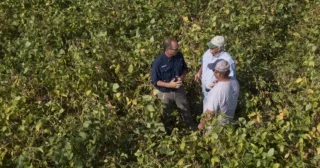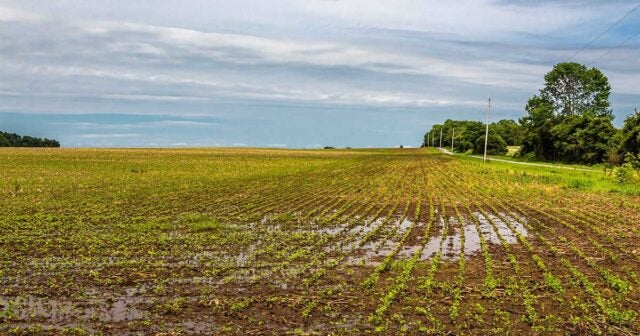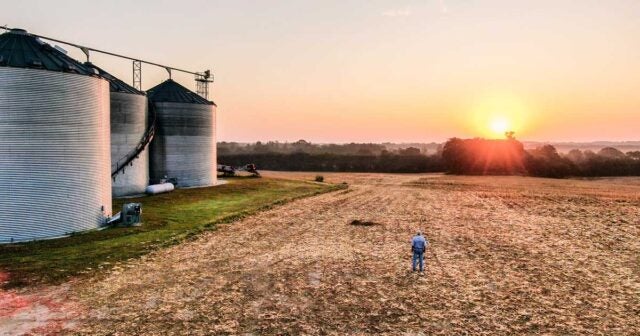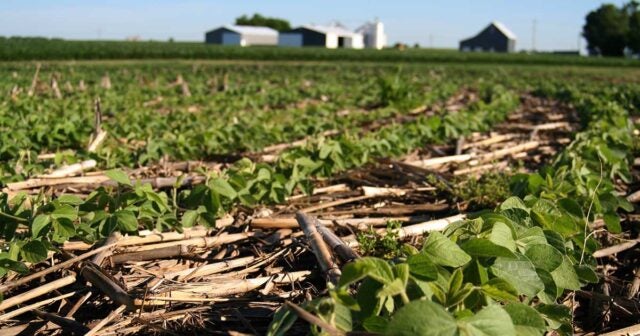- Resources
- Integrating resilience into ag finance and insurance requires industry and research collaboration
Resources
Integrating resilience into ag finance and insurance requires industry and research collaboration
Published: September 11, 2025 by Mai Lan Hoang
Farmers and rural communities are increasingly being impacted by extreme weather as recently demonstrated by devastating floods in Texas, and extreme heat across U.S. crop producing regions. To help farmers better adapt to extreme weather, finance and insurance markets must incorporate the value of resilient practices – such as cover crops and efficient water management – into their pricing, risk models and solutions offered to producers.
By factoring in resilience, these sectors can better support investments on the farm that strengthen long-term resilience.
For this to happen, farm lenders and crop insurers will need to collaborate with researchers to structure research that evaluates how resilient practices impact risks and financial outcomes.
This year’s Agricultural and Applied Economics Association Conference highlighted recent research efforts on the financial impacts of resilient farming practices. Here are three key takeaways from this year’s conference.
1. Research on the economics of resilient ag practices is growing, but key data gaps remain
Researchers in attendance emphasized the need for stronger economic data on resilient practices to support farmer decision-making and inform policy, finance and insurance stakeholders.
Several studies have examined how financial incentives affect adoption rates of resilient agricultural practices, as well as the associated costs and benefits for farmers. However, more research is needed to determine whether such practices reduce credit risks and mitigate crop insurance losses.
Researchers also discussed the need for granular and long-term data on the adoption of resilient practices and resulting yield outcomes, in addition to access to financial data such as loan performance and credit risk data. With better access to private sector data, researchers will be able to analyze how resilient practices influence credit and financial risks in agricultural lending and insurance – insights that could directly inform loan terms and insurance pricing that reward investment in agricultural resilience.
2. Emerging tools are helping to overcome data challenges
At this year’s conference, researchers highlighted the increasing use of innovative tools, like remote sensing, to track the adoption of practices such as tillage and cover cropping on a large scale. When combined with yield and financial data, the resulting datasets could allow researchers to evaluate the impacts of resilient practices on farm profitability, land values and credit worthiness.
One example is a study led by researchers at University of Arizona, North Carolina State University and Regrow Ag which combined remotely-sensed data on cover crop adoption with crop insurance indemnity data to assess the practice’s impact on reducing crop insurance losses. The study found that counties with higher cover crop adoption tended to have lower crop insurance losses related to drought, excess heat and excess moisture. Insights like these can inform insurance pricing and rating adjustments that effectively value resilience and support further adoption.
3. Collaboration is key to accelerating research that supports practical financial solutions for resilient agriculture
To conduct relevant and applied research, researchers need access to financial and insurance datasets that can be paired with emerging data sources to quantify the financial impact of resilient practices. They also need insight into risk assessment frameworks used by agricultural lenders and insurers to ensure that their findings translate into actionable solutions that strengthen existing models.
In turn, industry stakeholders stand to benefit from peer-reviewed research and data that is directly applicable to their strategies and tailored to the products and services they provide to farmers.
EDF is working with researchers at Cornell University and a major agricultural lender to apply this collaboration model. Together, the team is evaluating how resilient practices impact farmland values, with the goal of integrating their financial value into the farmland loan market. The lender plays a critical role in shaping the research approach and helping to translate findings into risk model adjustments, which will inform borrowing costs and loan approval processes for farmers adopting resilient practices.
Academic researchers who attended this year’s conference are developing innovative techniques to analyze the financial and risk impacts of resilient agricultural practices. Now it’s time for agricultural lending institutions and crop insurance companies to collaborate with the academic field by contributing tailored research questions, as well as industry-specific metrics and datasets that can help deliver results that are implementation ready. These industry and research collaborations will produce the data needed to effectively integrate the value of resilience in farm finance and insurance – ultimately supporting farmers in increasing their financial resilience to extreme weather.
Our Experts

-
Financial Solutions for Agricultural ResilienceLearn More




